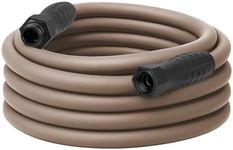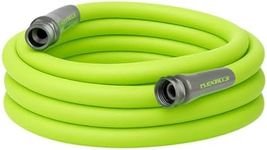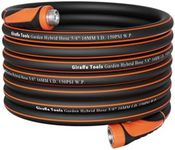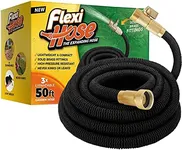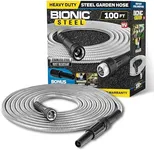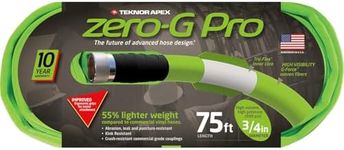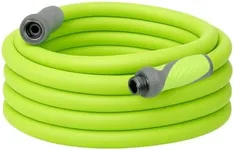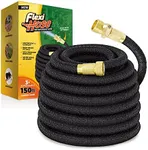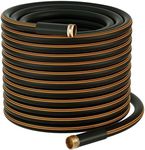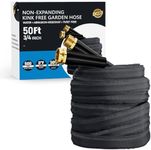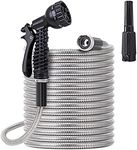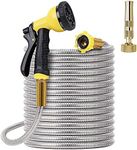Buying Guide for the Best Garden Hoses
Choosing the right garden hose can make a big difference in the ease and efficiency of your watering and outdoor cleaning tasks. There are a variety of options to consider, and the best choice depends on how big your yard is, what you plan to water, and how you'll be handling and storing the hose. Before picking a hose, think about how far you need it to reach, what you'll use it for most often, and how often you'll need to move or store it. A little thought up front means fewer hassles and better results down the line.LengthHose length refers to how long the garden hose is from end to end and this will determine how far you can reach with it in your yard or garden. If your hose is too short, you'll need to constantly move it or use extra hoses, and if it's too long, it becomes heavy and awkward to handle. Hoses generally come in segments like 25, 50, 75, or 100 feet. Shorter hoses (25-50 feet) are lighter and easier to store, great for small yards or patios, whereas longer hoses (75-100 feet) are suitable for larger gardens but can be harder to manage. To get the right length, measure how far your faucet is from the furthest spot you want to water, then buy a hose that's just a bit longer so you’re not straining to reach.
MaterialGarden hoses are made from materials like vinyl, rubber, or reinforced blends, and each type has its own benefits. Vinyl hoses are lighter and usually less expensive but may kink or crack more easily, which makes them best for lighter use or occasional watering. Rubber hoses are heavier, more durable, and handle higher water pressure without damage, making them good for frequent use or tougher jobs. Reinforced hoses, often made from multiple layers or with mesh, are a good balance of strength and flexibility. Selecting the right material often comes down to how often you'll use the hose and in what conditions; for regular or heavy-duty use, rubber or reinforced is best, while vinyl suits light gardening.
DiameterThe diameter of a hose affects how much water flows through it and is usually measured in inches (like 1/2, 5/8, or 3/4 inch). A wider diameter can deliver more water, which is helpful for filling large containers or general watering, while smaller diameters will result in a lighter hose that's easier to handle but with less water flow. Most home gardeners find 5/8 inch to be a comfortable balance for typical watering needs. If you have a large area or want to use sprinklers or other high-demand attachments, a 3/4 inch diameter might be preferable, while a 1/2 inch diameter would be fine for light, handheld watering or potted plants.
Flexibility and Kink ResistanceFlexibility refers to how easily a hose bends and curves, which helps with moving it around corners or winding it for storage. A hose that's too stiff might be hard to maneuver, but one that's too soft can kink easily, blocking water flow. Some hoses are labeled as 'kink-resistant' which means they're designed to bounce back instead of folding on itself. If you need to move your hose around a lot or wind it up often, look for features or materials that highlight flexibility and resistance to kinking, as these will save you time and frustration.
CouplingsCouplings are the fittings on the ends of the hose where you connect it to a spigot or nozzle. They're commonly made from brass, aluminum, or plastic. Brass couplings are the strongest and last longest, resisting cracks and leaks, while aluminum is lighter but a bit less tough, and plastic can crack or warp over time. If you plan to use your hose frequently or need a solid, leak-free connection, brass couplings are usually the way to go, but for lighter or occasional use, aluminum or good quality plastic may suffice.
WeightWeight is determined by both the length and material of the hose, and affects how easy it is to move, drag, and store. Heavier hoses can take more wear but might be tiring to carry around, while lighter hoses are easier to use for quick watering jobs or if you have limited strength. If portability or ease of handling is important to you, look for shorter and/or lighter materials like vinyl, while for demanding tasks where sturdiness is key, heavier rubber hoses could be a better fit.
